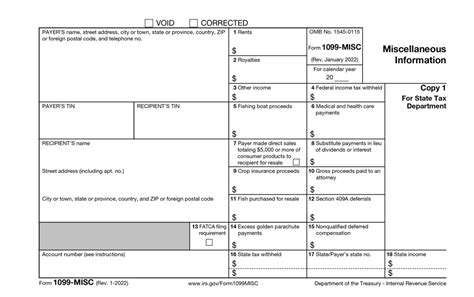How to File a 1099: A Complete Guide for Businesses
Filing 1099 forms correctly is crucial for businesses. Failing to do so can lead to penalties and legal issues. This guide will walk you through the process step-by-step, ensuring you understand your responsibilities and can file accurately.
Who Needs to File a 1099?
You need to file a 1099-NEC (for non-employee compensation) if you paid a contractor or freelancer $600 or more during the tax year. This includes payments for services rendered, such as:
- Freelancers: Writers, designers, developers, consultants.
- Independent Contractors: Those providing services without being considered your employees.
- Sole Proprietors: Self-employed individuals who provide services to your business.
Important Note: The distinction between an employee and an independent contractor is crucial. Misclassifying someone as an independent contractor when they should be classified as an employee can result in significant penalties. The IRS offers resources to help determine the correct classification. Consult a tax professional if you’re unsure.
What Information Do You Need to File a 1099?
Before you begin, gather the following information for each recipient:
- Their Full Name and Address: Ensure accuracy to prevent delays or returned forms.
- Their Taxpayer Identification Number (TIN): This is usually their Social Security Number (SSN) or Employer Identification Number (EIN).
- The Total Amount Paid During the Tax Year: This includes all payments made to the individual, exceeding $600.
Steps to File a 1099
There are several ways to file 1099 forms:
1. Manually Filing 1099s
This method involves purchasing paper forms, filling them out by hand, and mailing them to the IRS and your contractors. It’s time-consuming and prone to errors. This method is generally not recommended for businesses with a significant number of contractors.
2. Using Tax Software
Tax preparation software offers a streamlined approach. Many programs guide you through the process, automatically calculating totals and generating the necessary forms. This is a more efficient and accurate method than manual filing.
3. Using Online Filing Services
Several online services specialize in 1099 filing. They typically offer features such as:
- Secure Data Entry: Safeguarding sensitive taxpayer information.
- Automated Calculations: Minimizing errors and saving time.
- Electronic Filing: Faster processing and confirmation of submission.
- Compliance Assistance: Ensuring you adhere to all IRS regulations.
4. Hiring a Tax Professional
For businesses with complex financial situations or those seeking assistance navigating the intricacies of tax law, hiring a tax professional is a wise investment. They can handle all aspects of 1099 filing, ensuring compliance and minimizing the risk of errors.
Deadlines for Filing 1099 Forms
The deadline for filing 1099 forms is typically January 31st of the following year. For example, 1099s for the 2023 tax year are due by January 31st, 2024. Failing to meet this deadline can result in significant penalties.
Key Considerations
- Accuracy is Paramount: Double-check all information before submitting your forms.
- Keep Records: Maintain copies of all 1099s filed, along with supporting documentation.
- Understand Penalties: Familiarize yourself with the potential consequences of late or inaccurate filing.
Filing 1099 forms may seem daunting, but by following these steps and using the appropriate resources, you can ensure compliance and avoid potential issues. Remember, if you have any doubts or uncertainties, consulting a tax professional is always the best approach.
